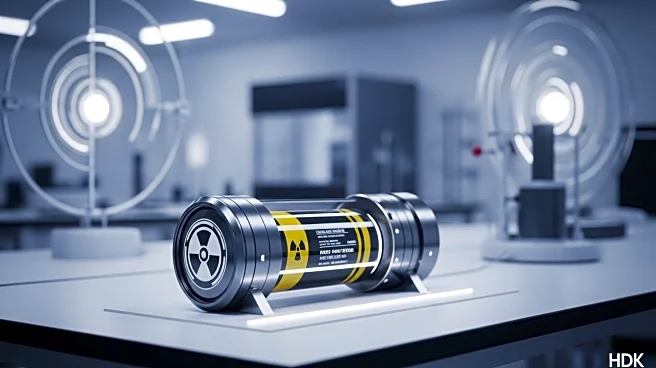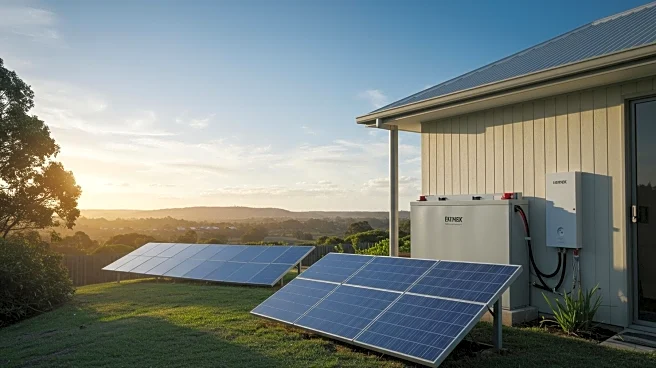What's Happening?
Researchers have developed hydroquinone-substituted polyallylamine (PDA) as a promising material for aqueous polymer-air secondary batteries. The synthesis involves condensing 2,5-dihydroxybenzoic acid with polyallylamine, resulting in a polymer with adjustable substitution levels. PDA exhibits excellent electrochemical properties, including high capacity and cyclability, making it suitable for use in rechargeable batteries. The polymer's improved hydrophilicity and electrostatic repulsion allow for efficient charge storage, achieving close to theoretical capacity even at high discharge rates. Additionally, PDA can be decomposed into raw materials through acid hydrolysis, offering a sustainable solution to plastic pollution.
Why It's Important?
The development of PDA as a battery material represents a significant advancement in energy storage technology. Its high capacity and recyclability address key challenges in the battery industry, such as performance and environmental impact. By enabling efficient charge storage and facilitating material recycling, PDA contributes to the sustainability of battery production. This innovation could lead to more eco-friendly battery solutions, reducing reliance on non-renewable resources and minimizing waste.
What's Next?
Further research may focus on optimizing the synthesis process and exploring commercial applications of PDA in various battery technologies. Collaboration with industry partners could accelerate the development of PDA-based batteries, potentially leading to widespread adoption in consumer electronics and renewable energy systems. Additionally, studies may investigate the scalability of PDA production, ensuring its viability for large-scale manufacturing.
Beyond the Headlines
The recyclability of PDA highlights the growing importance of sustainable materials in technology development. This research may inspire similar approaches in other fields, promoting the integration of environmental considerations into product design. Moreover, the study raises questions about the long-term impact of polymer-based batteries on resource conservation and waste management.











